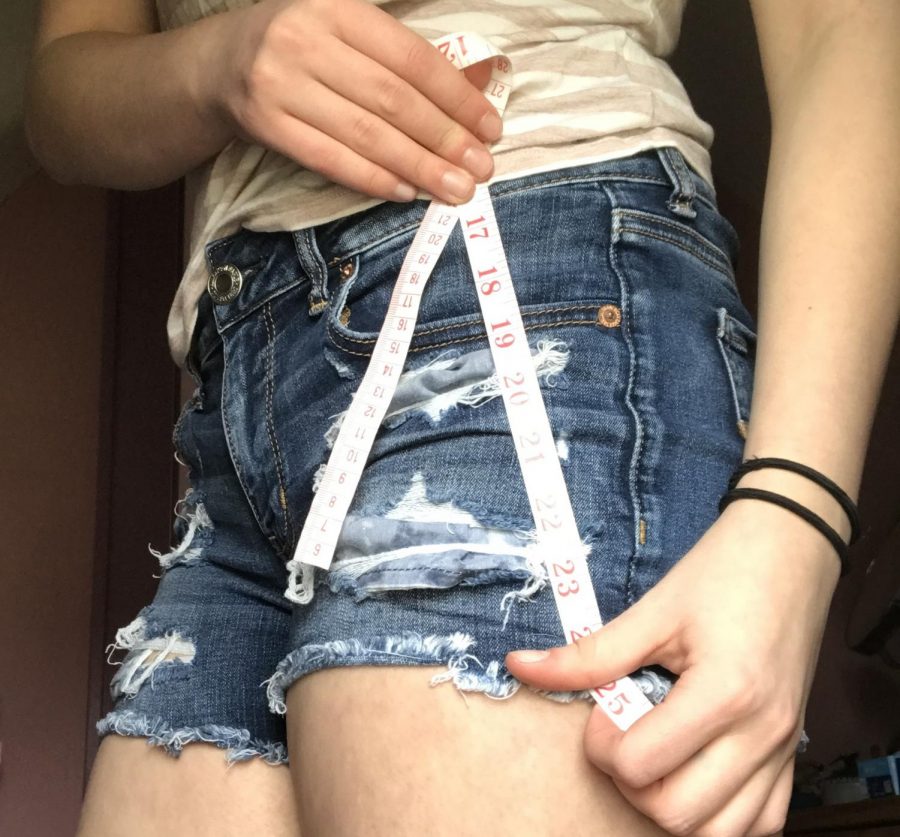No in-between
Marketing to teenage girls does not coincide with dress code
As students go shopping for new clothes, they face challenges as they struggle to find clothes that will not get them in trouble at school for breaking the dress code.
Most popular teen stores such as American Eagle and Hollister didn’t seem to get the memo on school dress code for shorts. Advertisements shown for teen viewing hardly ever contain a teenage model, let alone a teen model wearing shorts that are an appropriate length. With the way clothing is sold, a student can either wear shorts that are deemed too short or capris which do nothing during warmer weather: there’s no in-between.
Companies should be striving to be as all-inclusive as possible in this fast changing society we live in.
Even when trying to find shorts that fit the parameters, it’s close to impossible. With styles changing, schools should be prepared to face the onslaught of trend-followers.
Along with covering what’s permitted or not, the student handbook also states in bold that the faculty has a right to question a student’s clothing.
Some of the teachers feel that dress-coding students takes away from their education and has a bias against female pupils.
“I think a lot of the time what a student is wearing goes unnoticed because we’re not looking for it,” English teacher Blaire Lasko said. “I’m more concerned on not disrupting your learning than what you’re wearing.”
Similarities between the dress code throughout the years are more common than would be expected.
Teenage girls trying not to overheat shouldn’t be forced to choose between being uncomfortable and distracted during class or being dress coded.
It’s been observed by students that the dress code isn’t enforced as much in the higher grades. Freshman year is filled with write ups, then after that, it seems to disappear all together.
According to the student handbook on page 46, school is supposed to prepare us for real-life occurrences where we have to adhere to dress codes. It claims to want school to be a step up from leisure wear; however, some students attend classes in pajama pants without reprimand.
This kind of contradiction may be a factor in students not following or respecting the policies. The policy explicitly states that shoes must be worn at all times, yet there are countless students who take off their shoes during class with no repercussions.
Pointing out flaws in something doesn’t immediately assuage the problem, but if the school doesn’t enforce a section of a policy, the rest will crumble and be disregarded as it seems to have been. So if it will eventually cease to be followed, why not abolish it now and avoid wasting time and resources spent when policing fashion in the building.



